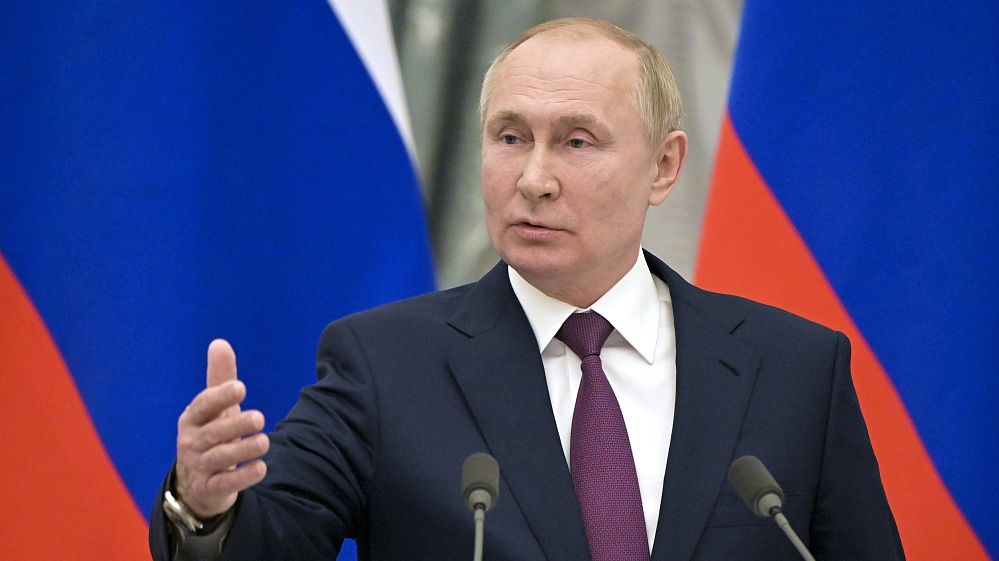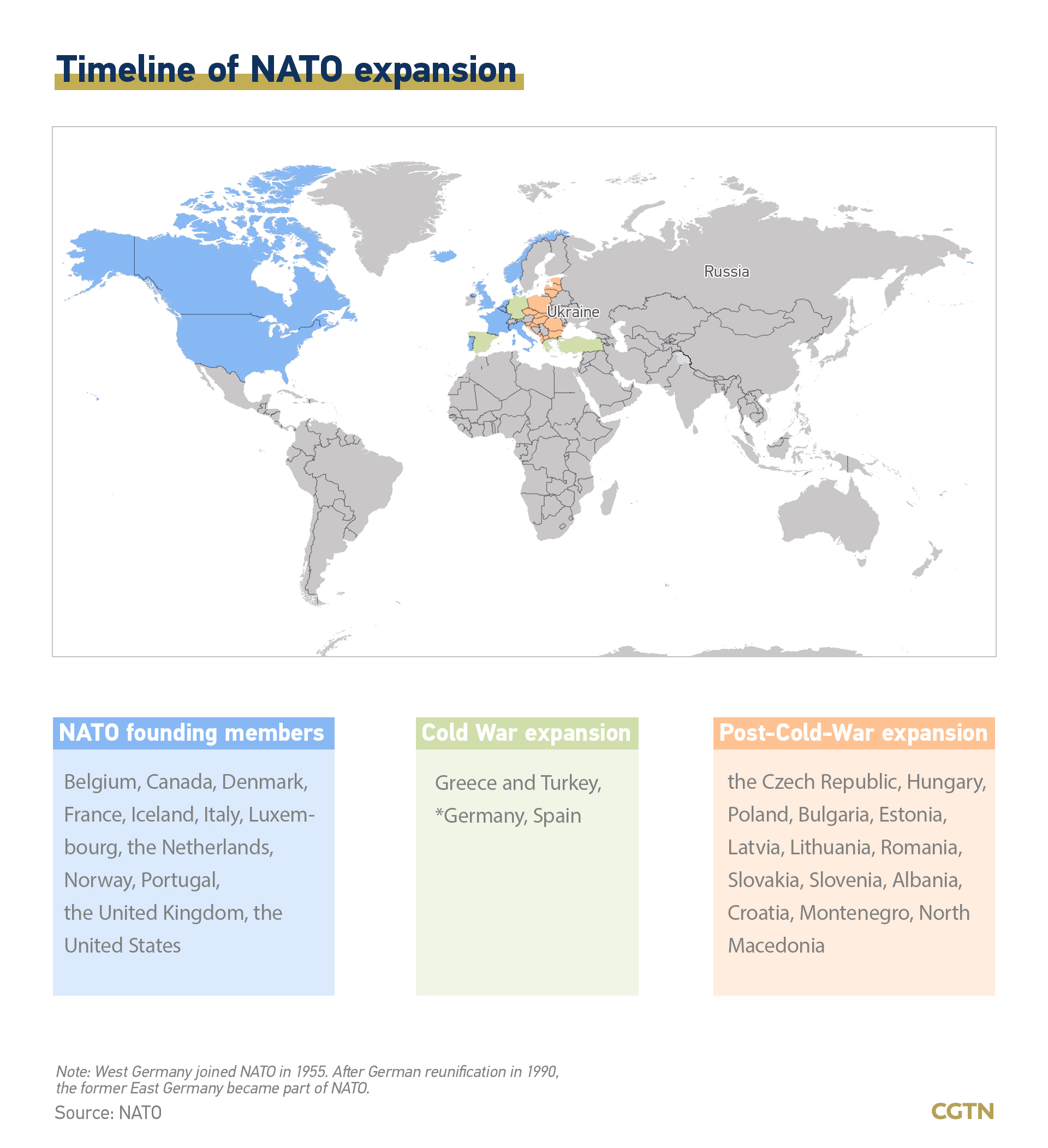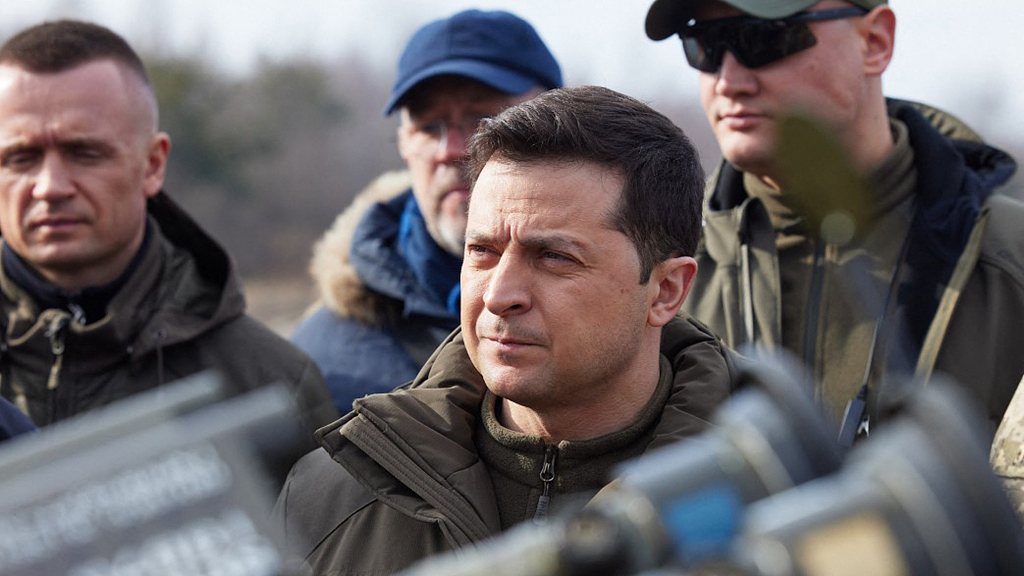
Russian President Vladimir Putin addresses a news conference with German Chancellor Olaf Scholz in Moscow, Russia, February 15, 2022. /VCG
Russian President Vladimir Putin addresses a news conference with German Chancellor Olaf Scholz in Moscow, Russia, February 15, 2022. /VCG
Russia insists it has no plans to invade Ukraine and says it is withdrawing troops from exercises along its western neighbor's borders, yet U.S. President Joe Biden is "convinced" a decision has been made in Moscow to attack the Eastern European country.
Diplomatic maneuverings, sanctions warnings, troop deployments and exercises, and clashes in the eastern Donbas region are ongoing, and tensions are high amid claims and counterclaims.
Russia-Ukraine tensions: Follow the latest developments
Graphics: Russia-Ukraine ties and how they got here
So what does Russia say it wants? And how have Ukraine, NATO and the United States responded to its proposals?
Here's a rundown of Russia's key requests, based on a wide-ranging draft treaty addressing its security concerns it published in December 2021, and the reaction to date.
No to NATO membership
The role of NATO is a core factor in the current tensions. Estonia, Latvia and Lithuania, all former Soviet republics, joined in 2004 and NATO said in 2008 that it planned at some point in the future to offer membership to Ukraine and Georgia. The goal of joining is now written into Ukraine's constitution. However, although it has received significant military aid from the West, it hasn't moved much closer to meeting the requirements to formally join the alliance.
Russia wants: A legally binding promise from NATO never to accept Ukraine, Georgia or Moldova as members. It sees membership as a serious security threat on its borders, and has criticized Ukraine's deepening relations with the alliance. On Thursday, in a formal response to a U.S. proposal for further negotiations, Russia accused the U.S. of failing to address its concerns over NATO expansion, a point repeated by President Vladimir Putin on Friday.

Response: Ukraine has received increased diplomatic support and military aid from the West in recent months, and NATO, weakened during the Trump administration, has remained united in the current crisis.
NATO officials say every country has the right to pick its alliances and Ukraine officially says it wants to keep open the option of joining NATO. "It's only Ukraine and 30 NATO allies that decide when Ukraine is ready to join NATO," Jens Stoltenberg, secretary general of the alliance, said during a press conference in December.
However, while the alliance's "open door policy" in theory remains in place, there has been no indication Ukraine will be ushered through it soon.
There have also been hints of a softening in Ukraine's approach. President Volodymyr Zelenskyy said at a news conference on Monday that joining the alliance could be "like a dream."
No to NATO troops in CEE
NATO forces are deployed across central and eastern Europe, with troop numbers bolstered further in recent months, and the organization plans "to further strengthen NATO's deterrence and defense" are being worked on. Around 12,000 NATO troops are reportedly stationed in the region along with fighter jets, as well as a missile defense center in Romania. Estonia, Latvia, Lithuania, Poland, the Czech Republic, Slovakia, Hungary, Romania, Slovenia, Croatia, Montenegro, Albania, North Macedonia and Bulgaria are all full NATO members.
Russia wants: NATO to withdraw troops and military infrastructure from countries that joined the alliance after 1997. It sees the presence of NATO on its western flank as a serious security threat. Putin said on Friday that Russia and Belarus are taking collective measures to ensure the security of the two countries in light of the growing military activities of NATO countries along the external borders of both states.
Response: NATO countries have deployed more troops to Ukraine's neighboring countries, saying the increase in its presence in eastern Europe is a response to Russian actions. However, the U.S. has said it would be willing to discuss the possibility of restricting military exercises in the region in coordination with Russia.
Yes to Minsk accords
Clashes between Ukrainian forces and armed groups in the east of the country, ongoing for the past eight years, have intensified over recent days despite a ceasefire that was reaffirmed in January. An initial peace deal was agreed in 2014 and a followup was struck in 2015 after talks between Russia, Ukraine, France and Germany. But clashes continue in the breakaway Donbas region and an estimated 14,000 people have been killed since 2014. Russia's State Duma approved a bill on Tuesday recognizing the self-proclaimed Luhansk and Donetsk republics in Donbas. On Friday, leaders in Donetsk and Luhansk said they were evacuating civilians to Russia.
Russia wants: Ukraine to agree to the autonomous status for the Donbas region, as set out in the Minsk accords. The 2015 deal has not been fully implemented, and Moscow wants Kyiv to follow through on the agreement. Putin said on Friday that "the key to restoring civil peace in Ukraine ... is the implementation of the Minsk agreements." "All Kyiv needs to do is sit down at the negotiating table with representatives of the Donbas and agree on political, military, economic and humanitarian measures to end this conflict. The sooner this happens, the better," he added.

Ukrainian President Volodymyr Zelenskyy (C) listens during a military drill outside the city of Rivne, northern Ukraine. /VCG
Ukrainian President Volodymyr Zelenskyy (C) listens during a military drill outside the city of Rivne, northern Ukraine. /VCG
Response: Negotiations between Russia, Ukraine, France and Germany have continued via the Normandy format. Under the Minsk agreements, supported by the United States and China, Ukraine agreed to decentralize power, hold local elections and give Donbas a special status, but interpretations of the deal vary. A declaration by the Normandy Four in December 2019 proposed a ceasefire in the region by the end of that year, a separation of forces by the end of March 2020, a withdrawal of heavy weaponry from the demarcation line, a prisoner exchange and local elections, but progress has been limited.
However, while Zelenskyy has criticized the Minsk accords, he has also said he is willing to resume negotiations. "It is time to agree in a substantive manner for ending the conflict, and we are ready for the necessary decisions during the new summit of the leaders of the four countries," he said in mid-January, referring to the Normandy format.
No to U.S. missile deployments
The U.S. is building a missile defense base in Poland and has an existing facility in Romania, and has missiles stationed in several European countries. The Trump administration abandoned the Intermediate-Range Nuclear Forces Treaty with Russia in 2019.
Russia wants: A cut to deployments in Europe of U.S. medium-range missiles. Russia has said, in a document delivered to the U.S. on Thursday, that it is open to discussing mutual inspections of missile sites.
Response: The U.S. has offered talks on limiting the deployment of short- and medium-range missiles, and proposed mutual inspections. Russian Foreign Minister Sergei Lavrov on Monday noted that Washington has offered to conduct dialogue on limits for missile deployments in Europe, restrictions on military drills and other measures, the AP reported.

